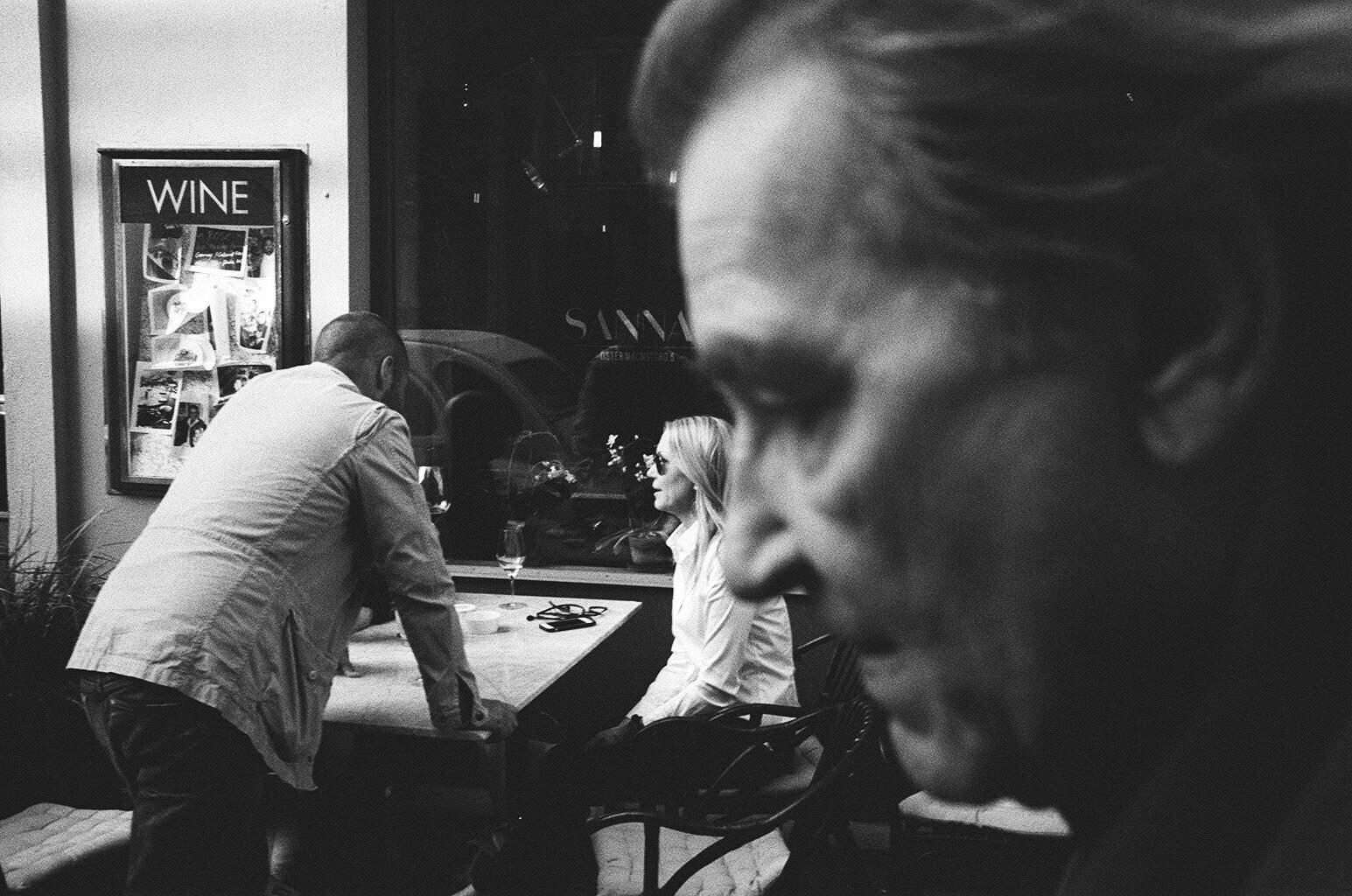
If I started street photography all over again, one technique I wish I knew was the “bookend” technique.
What do you need bookends for?

Imagine a book-shelf. You have tons of books on the shelf, but it isn’t quite full. You have some books falling over.
What is the solution to prop up the books and prevent them from falling over? Simple: add “bookends” to each side of your books. This keeps them together.
Bookends in photography

You can apply the same metaphor to your photographs. If you want more energy and focus in the center of your frame, figure out how you can add visual “bookends” to the left and right side of your frame.
A “bookend” can be a wall, a side of someone’s face, or some other element. The secret is you don’t want any negative space between your bookend and the background. You want the “bookend” to fill perhaps 30% of the left (or right, or both) sides of the frame.
How to capture “bookends” in street photography

When you’re shooting street photography, a way you can integrate “bookends” to your images is to shoot with a relatively wide-angle lens (35mm or 28mm) and focus on the thing far away in the background. Then while you’re clicking, try to add a subject’s face, or bodily part to the extreme left or right of the frame. In a perfect world, you would want two bookends (to subtract distractions from the background, but also to add more dynamism to the middle of your frame).
Also by adding bookends— you can add more depth to your photographs. You can also help lead your viewer’s eyes to the center of the frame— and direct their eyes onto a “visual anchor” (the most important thing happening in your photograph).
Capturing bookends are hard in street photography

Capturing “bookends” is a more intermediate/advanced technique in street photography.
If you’re starting off, give it a go. Start off by having your friends or family members being “bookends” on the extreme left or right side of the frame.
Then once you’re comfortable doing that, try it out on the streets. Trust me, it will be damn hard— but once you master it, it will add additional interest and depth to your photographs.
Learn more about street photography techniques
To learn more street photography techniques, check out the article “15 Street Photography Techniques”.
For a more comprehensive overview, check out Street Photography 101 >

